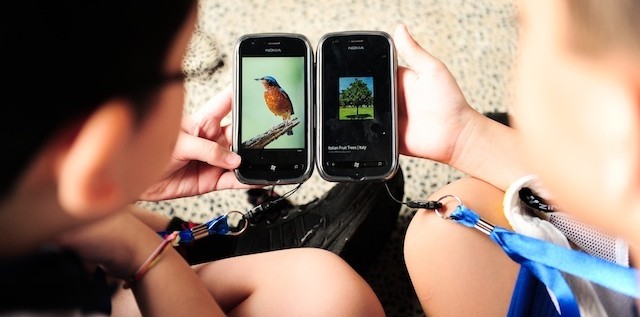Low Income Students’ Test Scores Leap 30% With Smartphone Use

Cellphones are banned from many schools — at least from the classroom — because students play games, text friends and do other activities that distract them from learning. But mobile technology for students in a classroom setting isn’t always a hindrance to good grades and learning.
Qualcomm’s Wireless Reach Initiative aims to conquer the digital divide between those who can and can’t afford wireless Internet access. After smartphones were distributed to low income students, standardized test performance drastically increased because students could more easily communicate with their peers and access information throughout the day (and night).
Peggy Johnson, executive vice president for Qualcomm Incorporated and president of global market development, spoke with Mashable about how wireless technology can bolster education in America and abroad.
“Not everyone has a TV, a PC or electricity but we’re approaching the point where everyone can have [Internet] access,” Johnson says. “The umbrella coverage of these wireless networks have really reached the four corners of the world.”
Accessing the Internet from a mobile device is the easiest way — and typically the cheapest — for people living in impoverished areas to connect to the web. Simply having access to information and the ability to easily communicate with others has been shown to provide a better classroom experience for students — and in some cases provide a digital teacher for villages that otherwise wouldn’t have one.
“In a village that might not have a classroom and a teacher, you can send in a single tablet and with some instructions you can leave behind a classroom,” she says.
“Essentially the walls of the classroom came down and they were able to share ideas throughout the day,” Johnson says.

Since its launch, the program has expanded to eighth though 12th grade students in North Carolina, Virginia and Ohio.
For these programs, Johnson says Qualcomm will either partner with government agencies, the private sector or local NGOs, but “always with sustainability in mind.”
The Wireless Reach Initiative began in 2006 as a way to provide wireless communication to disadvantaged communities around the globe. To date, the Wireless Reach program has 73 programs in 31 cities nationally and internationally.




